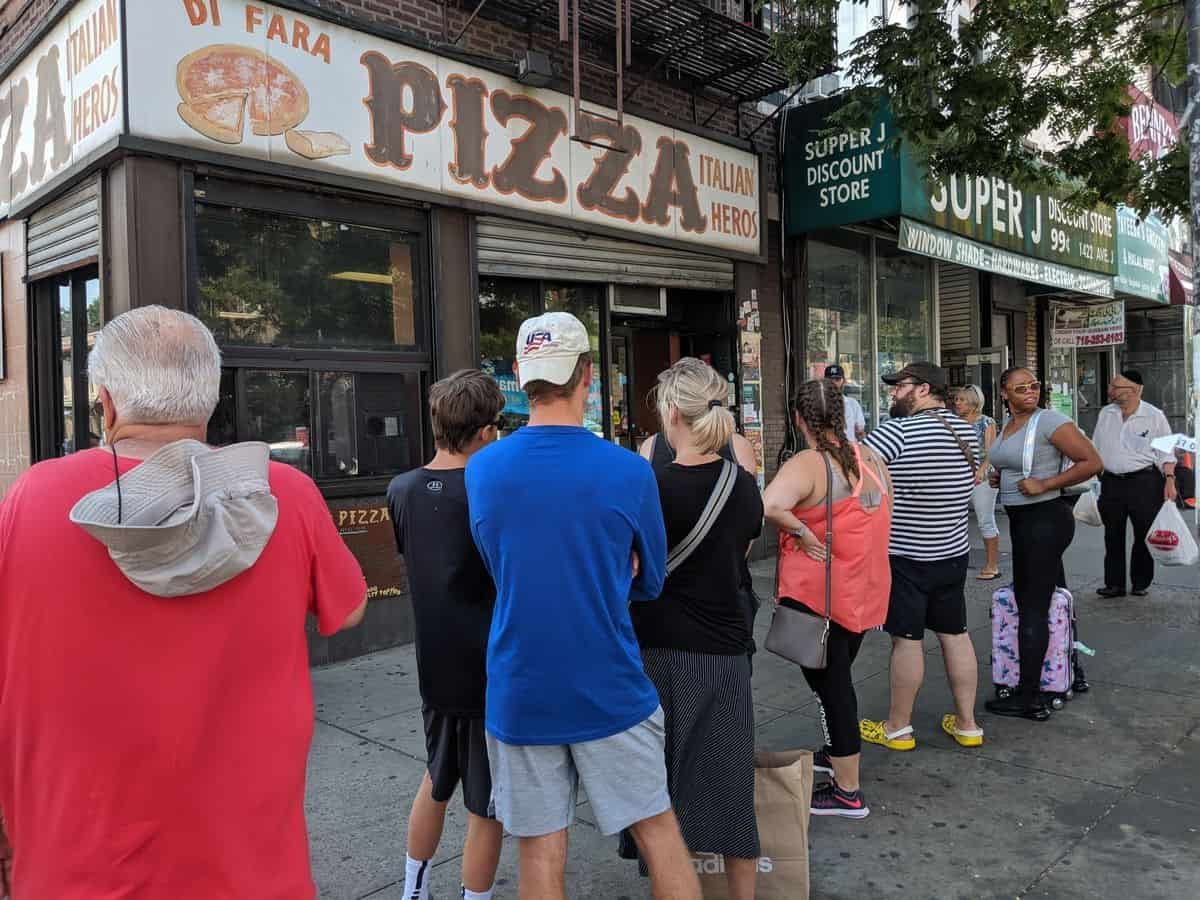I live down the block from Di Fara’s Pizzeria on Avenue J in Midwood, Brooklyn. I must admit that I have a love-hate relationship with Di Fara. Well, maybe annoyance is a better word than hate. Let’s talk about the annoyance part first.
Mostly, when I pass Di Fara there’s a long line wrapped around the block. And you can tell that the line is comprised of people from other neighborhoods. Midwood is mostly Orthodox Jewish, mixed ethnic and working class. And, at least for the moment, is it not a hipster neighborhood. You don’t see a lot of nose rings, hair-buns and knitted summer hats. But on the Di Fara line, there’s a sea of nose rings and ironic facial hair. What’s annoying about this is that there’s always a line. It doesn’t matter who’s on it, but there’s a line, which makes going to Di Fara like a Mission: Impossible episode. Also, from my experience, seeing ironic facial hair is an indicator that my rent is about to go up. But that’s another story.
If you must go to Di Fara and are willing to wait on the line, the whole situation becomes desperate once you’re inside. People are milling about, jockeying to get up to the counter, waving cash at the counterperson, afraid their turn will be missed. It feels like waiting on line at the DMV.
Then when it’s your turn at the counter, you’re lucky enough to spend $5 per slice. Although it is not consistently great, depending on who’s making the pizza, Di Fara is often very good. At least for me, the lines, the waiting and the cost sometimes work against my gastrointestinal system.
The fact is that the average slice of pizza in New York City used to be pretty good. But now getting a good slice of pizza is an event. You have to go to a brick-oven pizza place to get good pizza, for the most part. Most pizza places use generic cheese, sauce, and dough. And they probably don’t know how to perform the magic that makes those basic ingredients become something mouthwatering and delicious.
Domenico “Dom” De Marco, who opened Di Fara Pizza in 1965 knows how to make pizza. Born in the Province of Caserta in Italy, Dom knows his way around Italian food. Many of the ingredients are imported from Italy; their distinct flavors create a taste that can’t be replicated. And Di Fara’s retro oven transmutes these already fine ingredients into something altogether different. Until recently, each pizza pie was handcrafted by Dom. You would often see him cutting the basil and pouring the virgin olive oil directly on each pizza. With several of his children supporting him in the kitchen, Dom is less seen these days. There are now two locations, in Midwood and Williamsburg, fully family owned and operated. And Dom’s children will continue the legacy of Di Fara, so long as people are willing to wrap around the block to buy it.
Mike Fiorito’s most recent book, Call Me Guido, was published in 2019 by Ovunque Siamo Press. His two short story collections, Hallucinating Huxley and Freud’s Haberdashery Habit, were published by Alien Buddha Press. He is a regular contributor to the Red Hook Star-Revue.









